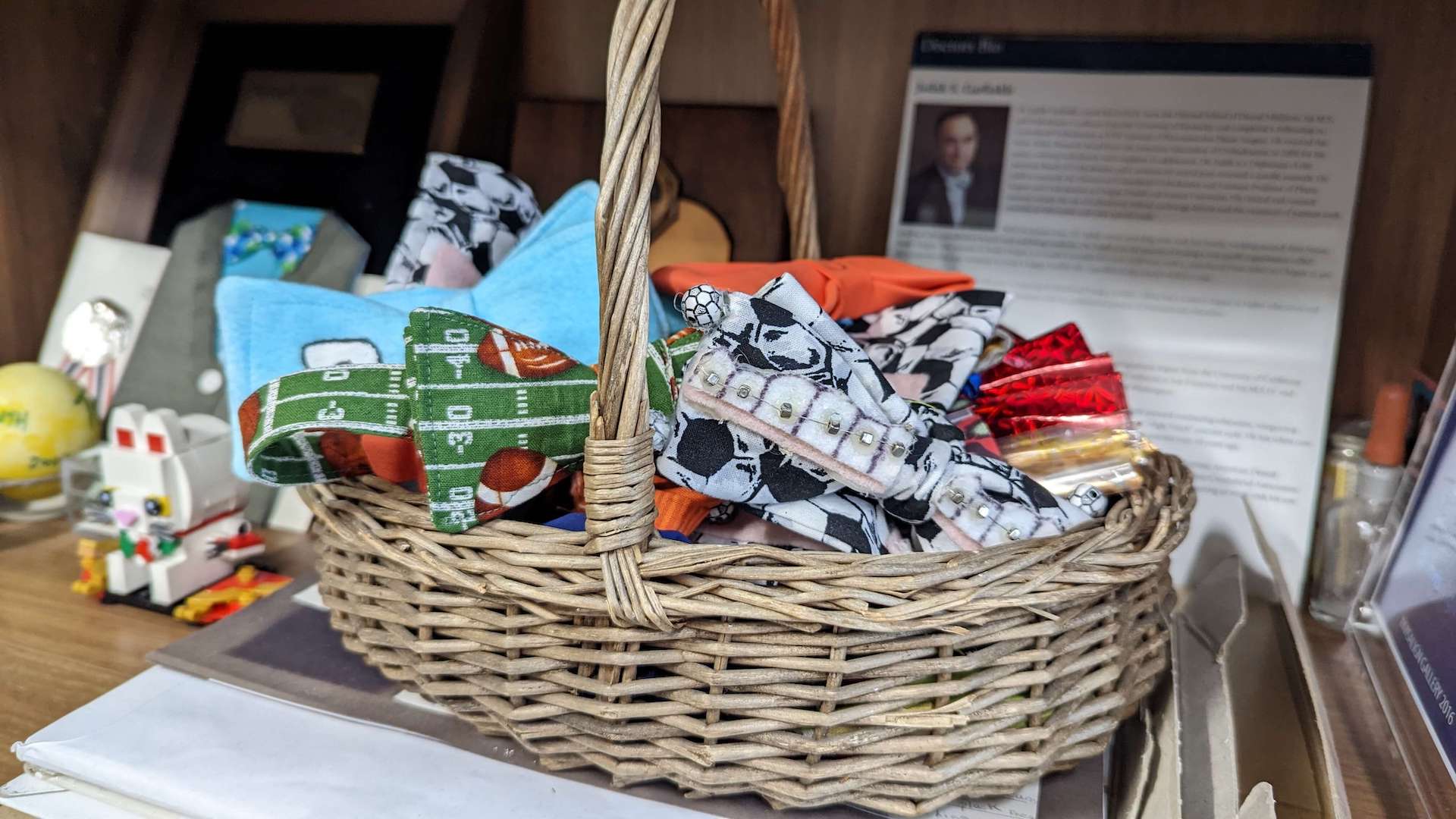Crafting Smiles that Elevate the Spirit- a chat with Dr. Judah
Dec 27, 2022“You get on these paths, and it’s just motion, motion, motion. I think some of the most dynamic, interesting, successful people can step out of that and communicate about the bigger picture about why they’re doing what they’re doing and what their experiences are along the way,” Dr. Judah Garfinkle explains, as he sits back in his chair and considers how he became interested in a career in orthodontics.

He leans forward, glancing at his computer to see if he’s needed to assist one of the fifty-nine patients he’ll see today. His small office is surrounded by evidence of the history and legacy of the practice: Skeletal and dental models from decades past, a colorful assortment of patient-made fabric and beaded bowties, and piles of papers and folders containing his publications, certificates, and treasured family photographs.
Reflecting on his childhood with Dr. Richard Garfinkle, his orthodontist father (whose own father was an oral surgeon), he explains, “Obviously, I grew up with it, and so even before I knew it, I think things were being shared.” “I was always drawn to the sciences, and growing up, I’d learned about helping others and giving back.” Like a word you just learned, the support Dr. Judah provides to the community is everywhere: Continuing education lectures to the dental community, the leadership of professional study groups, sponsorship of local school programs, and acting board president and co-founder of the non-profit organization Smile Oregon. While Dr. Richard’s involvement in the cleft and craniofacial community likely influenced Dr. Judah, he also had the opportunity to travel to Bolivia with Operation Smile in dental school. There he met and cared for Ana, a young girl with an unrepaired cleft lip and palate, leaving her with an opening in her lips, gums, palate, and teeth in disarray.
“She carried a blanket around and always held it over her mouth. She wouldn’t make eye contact with anyone or engage in any of the programs or games.”
When Ana was in the recovery room following the lip repair surgery, Dr. Judah, having worked with Ana, was given the opportunity of handing her a mirror so she could see the results of the operation. The emotion in Dr. Judah’s voice is clear as he almost whispers, “I can remember handing her this mirror, she looked at me, she looked at her mom, and then she looked in this mirror. There wasn’t a dry eye around.” “I can remember feeling like the human spirit entered her body as I saw the first smile spread across her face as she looked in the mirror.” “I could feel a giant weight come off her mother’s shoulders as she saw her daughter smile for the first time.” Dr. Judah stops to think, staring up at the ceiling. “I think once you taste that, you want to hit that button as frequently as you can. So after returning from Bolivia, I knew I wanted to dedicate the rest of my career to preventing children from ever feeling like Ana did or helping them to overcome it.” Given his upbringing and experiences, it’s easy to understand why Dr. Judah’s commitment to service and people’s individual needs are the main focus of his practice. “I think what makes it special here is that we are a hundred percent focused on being of service to what other people need.” “But to really feel a win is getting to push that button again of feeling like I help somebody.”